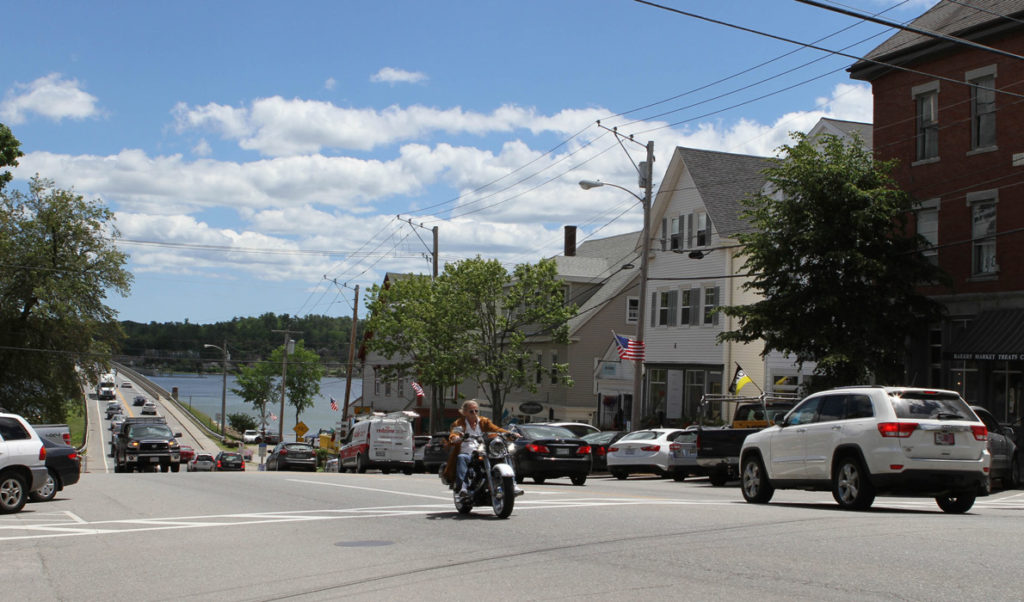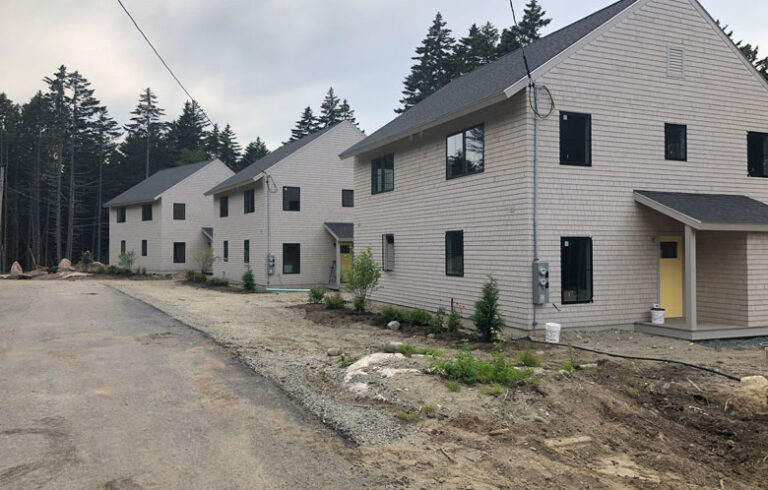By Greg Paxton and Sarah Hansen
Maine’s jagged 3,478-mile coastline grows to over 5,000 miles with all 3,166 offshore islands included, and our maritime heritage established many of the state’s communities along the coast and tidal inlets. Worldwide ice caps and glaciers, which contain enough ice to raise sea levels more than 200 feet if fully melted, are substantially shrinking each year. The latest estimate by scientists is a sea level rise of at least ten feet in the next 50 years, in addition to predictions of more and more extreme storms.
The Island Institute, through a $240,000 grant from the National Academies of Sciences, is taking a lead on responses to manage and mitigate this threat. And Maine Preservation placed coastal and waterfront communities on our 2017 list of Maine’s Most Endangered Historic Places to support development of community action plans for this critical issue.
Lubec’s 1907 brining shed, constructed as part of the McCurdy Smokehouse complex, is also on our list, perfectly illustrating the increasing threat to coastal resources.
McCurdy was the last operating smoked herring processing facility in the eastern United States when it closed in 1990, and is the only remaining intact complex in the country. Lubec Landmarks restored and maintains four other buildings in the complex which are open for public guided tours as an integral part of the town’s historic waterfront. Severe damage to the brining shed occurred during the blizzard of March 2017 and a June windstorm. Additionally, regular 18-foot tidal changes and increasingly intense winter storms have taken their toll on the pilings. Without $125,000 for emergency stabilization the building may not survive another winter.
Historic residential properties also are on our most endangered list. As the real estate economy continues to improve, individual houses and those in historic neighborhoods are threatened by an absence of local protection from demolition or major loss of their historic character.
Recently, an important ca. 1790 sea captain’s house at 154 Foreside Road in Cumberland was demolished without any review, input from neighbors or local residents, or consultation with preservation organizations. In Rockland, recent demolition of a house associated with two internationally famous actresses from the early Broadway and Silver Screen era, Maxine and Gertrude Elliot, sparked local concern over how easily an owner could bring down a significant landmark.
In fact, only 25 towns and cities in Maine have some historic protection compared to 84 in New Hampshire.
A key step in preserving historic houses and neighborhoods is developing greater public awareness. Surveying historic buildings is a pride-building activity that allows the history of the community to come alive through its structures. Passing a local ordinance to protect these important buildings and guide their rehabilitation is a second step. Studies have shown that protected historic districts not only save Maine’s heritage, but they appreciate in value faster than adjoining areas.
An effective statewide solution to ensure the preservation of historic homes would be passage of a state historic residential tax credit. This could mirror the highly effective historic rehabilitation tax credit for income-producing buildings, which has sparked over $400 million in investment in Maine since 2008. If enacted, this measure would encourage high-quality residential work and grow the property tax base while preserving our state’s unique heritage.
Other coastal-related properties on our most endangered list include the Frank J. Wood Bridge, Brunswick; Mary E. Taylor School, Camden; Waldo Theatre, Waldoboro; and Wiscasset, which faces threats from the removal of its historic preservation ordinance and from the state Department of Transportation’s plan to eliminate downtown parking as part of an untested and costly solution to traffic challenges.
The new normal is pushing Maine and historic preservation into an era where current methods of revitalization and celebration of place are being met with the very real future of loss. With tourism the largest industry in Maine, without planning and strong action, we make ourselves economically as well as physically vulnerable.
Next steps will require innovative collaborations developing measures to meet these challenges. The future of our heritage and the legacy we leave for generations of Mainers depends upon quick and progressive action.
Greg Paxton is executive director of the nonprofit organization Maine Preservation, and Sarah Hansen is its real estate manager. The complete list of endangered historic places is at: MainePreservation.org.





